-
About
- About Listly
- Community & Support
- Howto
- Chrome Extension
- Bookmarklet
- WordPress Plugin
- Listly Premium
- Privacy
- Terms
- DMCA Copyright
- © 2010-2025 Boomy Labs


 Matthew A. Dolman
Matthew A. Dolman
Listly by Matthew A. Dolman
AFFF Fire Fighting Foam is manufactured by 3M whom ignored the link between deadly carcinogens such as PFAS and PFOS and the diagnosis of cancer. Firefighting foam is regularly used in practice by commercial and volunteer firefights along with firefighters at commercial airports and military bases.
These known carcinogens cause numerous types of cancers. Even more troubling is these carcinogens are known as "forever chemicals due to their inability to break down in the human body or environment. .
New research is demonstrating that the carcinogens in AFFF can make its way into the aquifer and impact groundwater. This may just be the tip of the iceberg. Please note there are two types of PFAS/PFOS claims. One type is lawsuits brought by municipalities and business due to the environmental harm caused to property as a result of contamination. Another type is individual cancer claims as a result of exposure to AFFF Firefighting Foam brought against the manufacturers of such fire retardant.
Firefighting foam is used by commercial and volunteer firefighters. In fact, the biggest exposure is to members of the military as U.S. Air Force and Navy firefighters are the most prolific users of the foam to combat liquid fires. I have created this list as a resource to the general public and AFFF cancer victims
Source: https://lawsuitlegalnews.com/aqueous-film-forming-foam-afff-lawsuits/
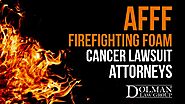
Aqueous film forming foam containing PFAS man-made chemicals have been proven to be dangerous for the environment as well to humans. PFAS has been nicknamed the "forever chemical" due to its lack of a half life and how it is nearly impossible to break down in the environment.
The carcinogens in AFFF firefighting foam has a devastating and far ranging impact to those residing on or near military bases, firefighting stations and commercial airports..... (click on this article to learn more)
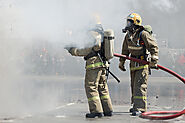
Were you diagnosed with cancer after being exposed to firefighting foam? Aqueous Film-Forming Foam (AFFF), which is used to extinguish liquid-based fires like those caused by gas or jet fuel, can potentially be dangerous to humans. AFFF is used solely for the purpose of fire suppression. These chemicals in fire fighting foam may increase the risk of certain types of cancer or cause other non-cancer issues like birth defects, obesity, and diabetes. Firefighters, military members, airport personnel, and those who work in the oil or gas industry may be particularly at risk to AFFF-caused cancer.
If you have been diagnosed with cancer after being repeatedly exposed to firefighting foam, you should contact a Firefighting Foam Cancer Attorney to see if you may be entitled to receive compensation for:
medical bills and expenses related to your cancer treatment,
compensation for pain and suffering,
lost wages or lost future earning capacity,
and other related damages.
The known health risks associated with AFFF is simply too great to ignore. The AFFF foam cancer lawsuit is presently subject to multidistrict litigation and all lawsuits throughout the Unites States are pending in Federal Court in South Carolina before Judge Richard Gergel. In other words, if you file an AFFF foam lawsuit your case will be consolidated in one single Federal Court in South Carolina with Judge Gergel presiding.
The Centers for Disease Control and Prevention (CDC) has long warned of the link between AFFF and cancer. In fact, the CDC is presently studying the contamination of drinking water by fire fighting foam.
Dolman Law Group has a long and successful history of fighting for the injured and we can help you too. There is no fee unless we recover money for your case. Contact us today for a free consultation regarding your AFFF cancer lawsuit.
Understanding the Risk Between Firefighting Foam and Cancer
The greatest risk for cancer caused by firefighting foam is to those who have been exposed for a long period of time, especially without understanding the risk. This often applies to firefighters, military personnel, airport employees, and other workers exposed to AFFF throughout their careers.
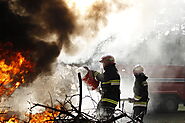
What is Fire Fighting Foam? Man-made chemicals known as Per-and polyfluoroalkyl substances (PFAS) can all be found in a wide range of consumer products. PFAS also include two other compounds, perfluorooctane acid (PFOA) and perfluorooctanesulfonic acid (PFOS) that have been identified in firefighting aqueous film-forming foam (AFFF). This specific type of firefighting foam is widely used across the US and has been shown to have links to cancer in those who are exposed to it.
AFFF has been in production since the early 1960s by the US Navy and 3M. The original AFFF is one of two types of synthetic foam that is effective in suppressing high-hazard flammable liquid fires that are classified as Class B fires. By coating the fuel with the firefighting foam, it prevents the fire from getting more oxygen and denies the fire the ability to further combust liquids like jet fuel and gasoline. As effective as AFFF is, there has been an increased amount of scrutiny towards the firefighting foam in recent years as the health risk of these dangerous chemicals have been exposed.
Read on to learn more about AFFF, the chemicals that make it dangerous, and how it causes cancer.

Firefighting Foam Related Health Problems and Lawsuit Value
Exposure to firefighting foam is a severe health hazard that can lead to a significantly high risk of developing cancer and other health problems. Firefighting foam may look fairly innocuous due to its bubbly white appearance but it undoubtedly contains hazardous chemicals that can not only hurt you but contaminate entire communities as well. Many people now have to contend with the many damages caused by firefighting foam and are filing lawsuits to try and attain compensation. An important factor in this process is properly understanding the full breadth of damages that exposure to firefighting foam can inflict in order to properly calculate exactly what you need when seeking compensation through a lawsuit.
(click on this article to learn more)

The manufacturers of firefighting foams have become the focus of litigation from all sides due to the dangerous properties that their product exhibits. Firefighting foam or aqueous film-forming foam as it is more formally known has been linked to the increased chance to develop cancers among those exposed to it either through direct contact to the foam or through ingesting water from foam contaminated water supplies. Firefighting foams are made and sold by some of the most powerful chemical companies in the world such as Dupont, 3M, Chemguard, and Chemours to name a few.
Those that have suffered because of their exposure to firefighting foam and the harmful chemicals they contain generally want to hold those responsible for their damages accountable for their actions. AFFF has directly and indirectly affected a large number of people ranging from firefighters directly exposed to AFFF to civilians that did nothing more than ingest water from trusted water sources that became contaminated. Lawsuits against these companies are nothing new and past cases will have a significant impact on how future litigation against firefighting foam manufacturers will proceed.
(click on this article to learn more)
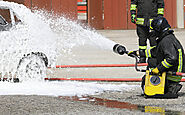
Groups At-Risk for Fire Fighting Foam Cancer While fire fighting foam has been proven to be a very useful tool in putting out dangerous fires, it also has caused a great deal of illness and pain among the many people that have been exposed to it. Fire fighting foam also known as firefighting aqueous film-forming foam or AFFF, is used in firefighting all over the country yet it has been linked with the development of cancer among many people that have had chronic exposure to it.
Many of these people that have developed cancer and other illnesses because of exposure to this substance have justly taken legal action against the makers and users of this dangerous substance. This basis for this legal action being the negligent implementation of AFFF or the supplying of AFFF without disclosure of the harmful effects that come with exposure to it. Many have utilized or have been exposed to this substance and developed cancer without realizing the link between the two. If you are in one of the following groups then you may be able to seek compensation for cancer or other AFFF caused illnesses by filing a lawsuit against the negligent companies that manufacture it.

Lawmakers have sent Gov. Gavin Newsom a bill that requires firefighters, airports, chemical plants and oil refineries to phase out the use of firefighting foam containing toxic chemicals that have been linked to cancer and other serious health problems.
(click on this article to learn more)
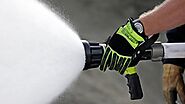
A toxic firefighting foam that has been linked to cancer and contaminated drinking water throughout California could soon be banned in the state.
State lawmakers on Sunday voted to phase out the sale and use of the foam to local fire departments, chemical plants and oil refineries, the Los Angeles Times reports.
The measure, introduced by state Sen. Ben Allen of Santa Monica, would require those agencies and businesses to find alternatives to the foam that don't contain perfluoroalkyl and polyfluoroalkyl substances, commonly known as PFAS.
Municipal fire departments would be banned from using the foam that contains PFAS by January 2022, chemical plans and airport hangars would have until 2024 and oil refineries would be required to stop its use by 2028.
(click on this article to learn more)
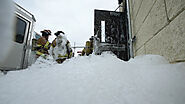
COHOES, N. Y. (SBG) — The military stopped using firefighting foam that contains toxic PFAS chemicals because of documented health risks. To get rid of its massive stockpile, Spotlight on America discovered the Department of Defense is spending millions of taxpayer dollars, burning the toxic foam in residential areas. Caption: Joce Sterman, Alex Brauer and Andrea Nejman.

The lawsuit alleges firefighting foam left PFAS in places including at Tampa International Airport. A lawsuit filed last month by the Hillsborough County Aviation Authority accuses firefighting foam manufacturers of negligence in selling a product that has contaminated local airports with harmful chemicals.
The lawsuit alleges the compounds “are present in certain areas of” Tampa International Airport, Peter O. Knight Airport, Tampa Executive Airport and Plant City Airport. They are commonly called “forever chemicals” because they don’t break down well and may taint the groundwater and soil, accumulating over time and sickening people who ingest them.

The utility serves more than 2.5 million customers. A spokesperson said Tampa Bay Water has not detected dangerous levels of the chemicals in its supply but is taking an 'initial step’ amid evolving science. The utility’s filing May 14 places it among a growing number of organizations calling for damages from the corporations for the release of “forever chemicals” — certain per- and polyfluoroalkyl substances, or PFAS, which studies show may hurt human health. The case references pollution from a particular type of foam used to fight fires, which has been connected to training sites, military bases and airports. The Florida Department of Environmental Protection lists MacDill Air Force Base as one place with a confirmed presence of at least one contaminant. Flame-retardant foam has also been tied to tainted wells near the Florida State Fire College in Ocala.

The former Wurtsmith Air Force Base in Oscoda is highly contaminated with PFAS chemicals, which have migrated through the groundwater into lakes, rivers, wildlife and drinking water wells.
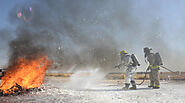
California is poised to take a big step to phase out one of the largest sources of toxic PFAS (per- and poly- fluoroalkyl substances) pollution: firefighting foam used to fight flammable liquid fires.
PFAS are a large class of man-made chemicals (including thousands of individual chemicals) used widely in industrial processes and consumer products such as non-stick cookware and food packaging, clothing, carpets, cosmetics—and firefighting foam. Unfortunately, PFAS do not break down (or they break down into other PFAS), spread quickly through the environment and are associated with a long list of harmful health effects, including cancer and developmental and reproductive harm. Unsurprisingly, firefighters face especially high exposures and risks on top of the dangers from fire that they take on as part of their lifesaving job.
PFAS in firefighting foam is also a major contributor to the contamination of drinking water. In California, water sources for water systems serving up to 19 million people have already been found to be contaminated with PFAS. Given that the state still has to conduct tests on many more drinking water sources, the number is likely much higher. PFAS contamination is very hard to contain, and clean up can be expensive. Given the health harms and the difficulty of cleaning up PFAS, it is imperative that we phase out unnecessary uses of these toxic chemicals. PFAS in firefighting foam is one such unnecessary use.

Research into alternatives for the toxic chemicals found in military firefighting foam is underway but no viable option has yet been found and the pandemic has delayed progress, a Defense Department official told House lawmakers Tuesday.
Over $95 million is sunk into research and development for remediating contamination by PFAS, short for perfluoroalkyl and polyfluoroalkyl substances, at hundreds of military bases and other defense operations throughout the U.S.
PFAS are also known as “forever chemicals” because they don’t break down in the environment. They are used in everything from nonstick bakeware to furniture to clothing, and for years have been widely used in a type of firefighting foam known as AFFF, or aqueous film forming foam, used by the military.
Exposure to the toxic chemicals has been shown to cause cancer and other health defects. It is a difficult pollutant to eliminate once it’s in the soil, ground and drinking water.

Nearly two-thirds of Wisconsin fire departments currently stock firefighting foam that contains so-called forever chemicals known as PFAS. More than half have bought, stored or used such foam in the past, according to a survey conducted by the Wisconsin Department of Natural Resources.
Perfluoroalkyl and polyfluoroalkyl substances — known as PFAS — are manmade chemicals that have been common in firefighting foam and everyday products since the 1950s. They've raised safety and environmental concerns because they don't break down easily in the environment and they've been linked to an increased risk of some cancers.
The survey was requested as part of Gov. Tony Evers' budget and sought to define use of foam containing the chemicals, which is considered a significant source of PFAS contamination. Wisconsin joins other states like Michigan, Minnesota and Vermont as they work with departments to address environmental risks.

Aqueous film-forming foam, known as AFFF, has long been a product heavily relied on by firefighters, military, and airport personnel for use in extinguishing fires caused by hydrocarbon fuels. However, the product is linked to cancer and other serious health conditions caused by toxic chemicals in the foam.
One of the most dangerous ingredients is perfluorooctanoic acid, known as PFOA, which can result in contamination of soil, groundwater, and even community drinking water in areas near where the foam was used to put out fires or in firefighter training.
If you have a health condition that resulted from PFOA contamination, an experienced attorney can help you understand your legal options for recovering damages related to your illness.
What Is PFOA?
Perfluorooctanoic acid (PFOA) is among the most commonly researched chemical compounds included in a group of several thousand manmade chemicals known as perfluoroalkyl substances (PFAS). PFAS are manmade chemicals that are known for their ability to withstand high heat and repel both water and oil. These chemicals have been used since the 1950s and are found in many everyday products, including carpets, clothing, non-stick pans, paints, polishes, cleaning products, and food packaging.
Beginning in the 1960s, the U.S. Naval Research Laboratory researched different firefighting chemicals, eventually developing the PFOA-containing AFFF. By 1979, AFFF was in use in more than 90 airports in the U.S., as well as by many civilian fire departments. Unfortunately, the companies that manufacture the foam have long known—or reasonably should have known—that PFOA is toxic and can lead to serious health conditions. Despite this knowledge, the foam continued to be manufactured and widely used, leading to contamination in many areas of the nation, particularly on or near military bases.
Measurable amounts of PFOA were discovered in the drinking water in at least 29 states. The Department of Defense has announced plans to study 664 military sites to assess PFOA contamination caused by firefighting foam.
Water contamination is the most common source of PFOA exposure, and this contamination is so prevalent in both drinking water and commonly used products that most individuals may have low levels of the substance in their bodies. PFAS are known as forever chemicals due to their long half-life and their ability to remain in soils or the body for a long time. Even low-levels of exposure to PFOA and other PFAS can be harmful to humans, though those who were exposed to higher levels of the chemicals are generally most affected.
(click on this article to learn more)

Per- and polyfluoroalkyl substances also known as PFAS have caused the development of cancer and other severe health issues among an unprecedented number of Americans due to the gross negligence of several major chemical companies. Companies such as Dupont, 3M, and Chemour knowingly polluted water supplies with and sold products containing dangerous amounts of PFAS. Now consumers and other people unwittingly exposed to PFAS are attempting to take legal action to try and hold these chemical companies accountable and get compensation for the damages they suffered because of PFAS exposure. The best thing that one can do when considering this course of action is to speak to an attorney.
PFAS Cancer Lawsuits and Hiring a Lawyer
Many people may wonder why they should even bother hiring a lawyer. It’s pretty obvious that they were hurt and the party that caused the injury is clearly responsible. Shouldn’t getting compensation be simple? Despite what you may believe about the circumstances of your case, seeking compensation in a civil lawsuit is rarely simple. Every case is unique and comes with its own set of challenges and curveballs that can easily ruin a person’s chances of getting the compensation that they need.
If you are going to file a lawsuit against the companies responsible for exposing you to PFAS then you should know that you will be among thousands of plaintiffs of similar circumstances that are all looking for compensation just like you. Like them, you will be going up against a defendant that is one of the most wealthy and powerful companies in the world that has seemingly unlimited resources and money to power the defense against a very high profile flood of class action lawsuits. You owe it to yourself to enlist the assistance of an expert in order to handle such an undertaking.
(click on this article to learn more)

For decades, firefighters, including both military and civilian units, used AFFF, or Aqueous Film-Forming Foam, to suppress fires. AFFF saw use in both actual fires and training exercises across multiple organizations. Unfortunately, many of the chemicals used in AFFF can build up in the body over time. Those chemicals can substantially increase your risk of developing several serious, life-threatening illnesses, including cancer.
At Sibley Dolman and Dolman Law Group Accident Injury Lawyers, we want to help victims who have faced serious illness due to AFFF exposure receive the compensation they deserve. Contact us today at 833-552-7274 to learn more about your legal rights following a cancer diagnosis related to AFFF exposure.
What Is AFFF?
AFFF, or Aqueous Film-Forming Foam, helps form a protective blanket that smothers fires water alone cannot put out. It includes chemicals perfluoroalkyl and polyfluoroalkyl substances, or PFAS, which help put out the fire. In some cases, these chemicals still appear in firefighting foams, despite the known cancer risks.
When developed, AFF helped suppress fires faster than other available methods. Many installations still use it for that purpose. Unfortunately, the risks may outweigh potential gains, especially if the chemicals leech into groundwater or run off into nearby land, where they can seep into groundwater, causing serious hazards for local area residents.
The Department of Defense notes:
DOD uses this firefighting foam because on ships and on aircraft, the close proximity of people, fuel and munitions can be especially dangerous. AFFF works by quickly by spreading out over the surface of the fuel, depriving the fire of oxygen, quickly extinguishing even large fires. The foam also prevents the hot fuel from reigniting. So far, only AFFF that contains fluorine chemicals called per- and polyfluoroalkyl substances, or PFAS, are capable of putting out dangerous fuel fires fast and keeping them out.
Unfortunately, the same attributes that make PFAS desirable in small spaces or dangerous circumstances also make them incredibly dangerous for humans. These fire suppression chemicals heighten the risk of cancer in people who face exposure to them, especially people who face considerable exposure over a long time.
What Problems Can AFFF Cause?
AFFF LawsuitsFire suppression chemicals can bind with proteins in the blood, where they can remain long-term. These chemicals cannot biodegrade, and may take thousands of years to eliminate from groundwater and soil. AFFF exposure leaves many firefighters with high levels of up to nine different fluorinate compounds in their blood.
These compounds can all substantially increase the risk of cancer, including:
Kidney cancer
Pancreatic cancer
Testicular cancer
Liver cancer
Breast cancer
Lymphoma
Leukemia
Non-Hodgkin’s Lymphoma
Ovarian cancer
Prostate Cancer
Bladder cancer
Exposure to AFFF and the chemicals contained within can also cause kidney damage.
(click on this article to learn more)
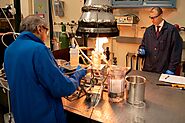
The Defense Department faces an environmental cleanup liability of around $33 billion, which is the second largest liability behind personnel benefits, the assistant secretary of defense for sustainment said. Cleaning up contaminants from past DOD activities is an ongoing process that will take years to complete, Jordan Gillis said at the Strategic Environmental Research and Development Program and Environmental Security Technology Certification Program — known as SERDP and ESTCP — Symposium, November 30.
"Developing and fielding technologies to reduce the cost and accelerate the progress of these remediation efforts will not only support our commitment to the health and safety of our service members and their families and the communities in which they serve, it will also free up funds for the core mission of the department," he said.
Regarding environmental cleanup, the department has been heavily focused on understanding and remediating PFAS — especially PFOS and PFOA — over the past several years, he said.
(click on this article to learn more)

New York Governor Andrew Cuomo has signed a bill banning the burning of aqueous film forming foam containing PFAS chemicals in cities designated Environmental Justice areas. The new law is tailored specifically for Cohoes.
The bill passed the legislature this year after local leaders learned the foam was being burned as part of a Department of Defense contract at Norlite in Cohoes, not far from public housing.
The bill is specifically aimed at the small Albany County city. Former EPA regional administrator Judith Enck says the governor "did the right thing."
"We can breathe a little bit easier, our work certainly is not done. But knowing that Norlite can no longer burn this foam, which contains PFAS chemicals, which is very toxic to the human body and ecology, it's the same class of chemicals that was found in the Hoosick Falls and Petersburgh and Newburgh drinking water supply."
Foam containing PFAS was burned at the Spindle City’s Norlite plant, which is near the Saratoga Sites housing. Democratic Mayor Bill Keeler lauded what he called Governor Cuomo’s leadership on environmental safety and his commitment to environmental justice.
(click on this article to learn more)
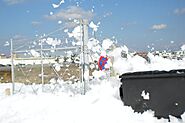
WHILE COMMUNITIES ACROSS the U.S. have been struggling with massive pollution from the military’s use of firefighting foam that contains PFAS, Japan has awoken to its own environmental crisis from the industrial chemicals in the foam. The growing awareness of the issue in Japan is largely due to one reporter: Jon Mitchell, a British investigative journalist based in Tokyo, who has spent years chronicling environmental contamination in the Asia-Pacific region.
His most recent book, “Poisoning the Pacific: The U.S. Military’s Dumping of Plutonium, Chemical Weapons, and Agent Orange,” is based on thousands of pages of documents he obtained from the U.S. military through the Freedom of Information Act; they detail the widespread contamination of bases and the areas surrounding them with PFAS and other hazardous substances, including chemical weapons, Agent Orange, jet fuel, and PCBs.
Bad Chemistry
Read Our Complete Coverage
Bad Chemistry
In the U.S., the fight over PFAS contamination from military installations, which The Intercept was first to report in 2015, now usually centers on the degree to which the Department of Defense is obligated to clean it up. But in Japan, which is home to 78 U.S. military facilities, bilateral agreements release the U.S. government from any obligation to test for contamination caused by its operations or remove it if it’s detected.
At the Foreign Correspondents' Club of Japan, Tokyo, in August 2018, Jon Mitchell gives a press conference about US military contamination. (Hiroko Tanaka)At the Foreign Correspondents’ Club of Japan, Tokyo, in August 2018, Jon Mitchell gives a press conference about U.S. military contamination. Photo: Hiroko Tanaka
The Intercept spoke with Mitchell about his reporting on the environmental consequences of U.S. military operations in Japan and how it’s been received in both countries; the interview has been edited for length and clarity
(click on this article to learn more)

The law known as Act 101 took effect in September and bans the use of firefighting foam containing PFAS except in emergencies. The chemicals have been linked to cancer and other health problems.
The move by lawmakers effectively eliminates any sort of target that a system would use to gauge whether treatment is removing PFAS to a level that's safe enough for release into the environment.
The emergency rule, approved by the Natural Resources Board, would have allowed the agency to set PFAS indicator levels for treating foam before discharging to sewers or waterways. State environmental regulators emphasized those levels were not enforceable. They would have been used as a trigger for systems to make adjustments to provide effective treatment.
The Legislature's Joint Committee for Review of Administrative Rules (JCRAR) suspended those action levels along with other parts of the rule. Lawmakers also removed a definition of treatment that would require that process "to immobilize, remove or destroy the contaminant."
In addition, they removed references to foam contaminated materials, which referred to equipment like booms that may soak up PFAS.
(click on this article to learn more)
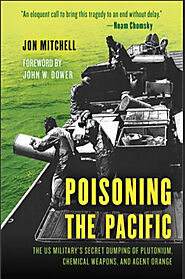
“POISONING THE PACIFIC”
British investigative journalist Jon Mitchell, based in Tokyo, spent many years researching his book, “Poisoning the Pacific: The U.S. Military’s Dumping of Plutonium, Chemical Weapons, and Agent Orange,” which documents the military’s “countless” releases of film-forming foam (AFFF) in Japan via accidents, leaks and crashes. He claims the U.S. has never released contamination information to the Japanese public, and that the U.S. Marine Corps has written guidelines which order their commanders not to tell Japanese officials about “politically sensitive incidents.” The Japanese government is now paying for filtering PFAS out of Okinawa’s contaminated drinking water, which Mitchell says was caused by the U.S. Military. The U.S. isn’t paying anything.
Mitchell’s book stems from thousands of pages of documents he secured from the U.S. military by way of the Freedom of Information Act, according to The Intercept. These documents include not only PFAS pollution—add widespread contamination with other hazardous substances, including chemical weapons, Agent Orange, jet fuel, and PCBs.
(click on this article to learn more)

1) Where is AFFF Used?
AFFF is used in a variety of settings, including:
Firefighting: AFFF is used by firefighters to extinguish fires. It is especially effective at putting out fires that involve flammable liquids.
Hazardous Material Cleanup: AFFF can be used to clean up hazardous material spills.
Aircraft Rescue: When an aircraft crashes, AFFF can be used to extinguish the flames and prevent the spread of fuel.
2) How It Can Affect Your Health?
It’s not often that you hear about a chemical that can affect your health in so many different ways, but that’s exactly what AFFF does. AFFF was developed by the military in the 1940s, and it’s been used ever since. AFFF is extremely effective at putting out fires, but it also has some serious health risks.
There are a few different ways that AFFF can affect your health. First, it’s a skin irritant. If you come into contact with AFFF, you may experience redness, itching, and swelling. In some cases, people have even developed blisters.
(click on this article to learn more)

Do you know what AFFF is? If not, you should read this blog post. AFFF is an acronym for aqueous film-forming foam. It’s a type of firefighting foam that is often used in emergencies. While it can be very helpful in putting out fires, it also has some potential health risks. In this blog post, we will discuss the top things you should know about AFFF and how it can affect your health.
When AFFF is used to put out fires, it can release harmful chemicals into the environment. These chemicals can include perfluorinated compounds (PFCs), which have been linked to a number of health problems. Exposure to PFCs has also been linked to developmental delays in children and increased cholesterol levels in adults. In addition, PFCs are considered “emerging contaminants” by the Environmental Protection Agency (EPA). This means that they are not currently regulated, but they may be in the future. You can explore how an AFFF cancer lawyer can help you and your family if you’ve been exposed to dangerous chemicals. It’s important to know your rights and options.
(click on this article to learn more)

Clearwater injury attorney Matthew Dolman, is a highly regarded advocate for injury victims. He was selected by his colleagues as a Florida Superlawyer published by Thompson Reuters. Matthew is a lifetime member of the Million Dollar Advocates Forum and the Multi-Million Dollar Advocates Forum.
Matthew handles personal injury claims throughout the State of Florida.